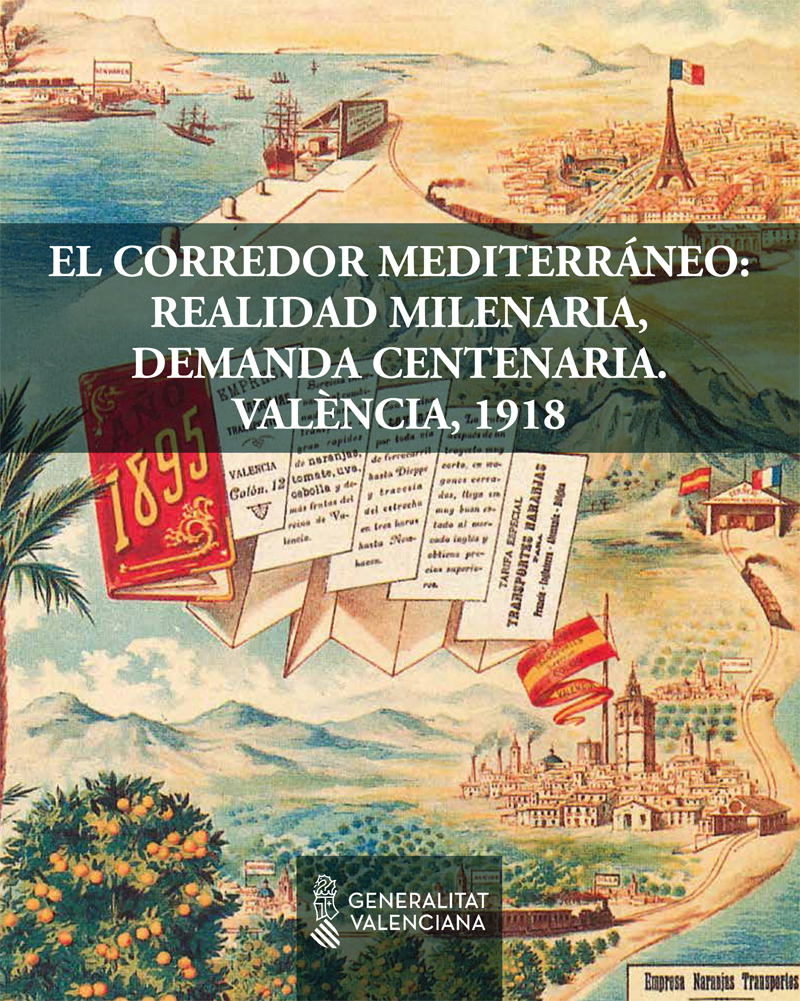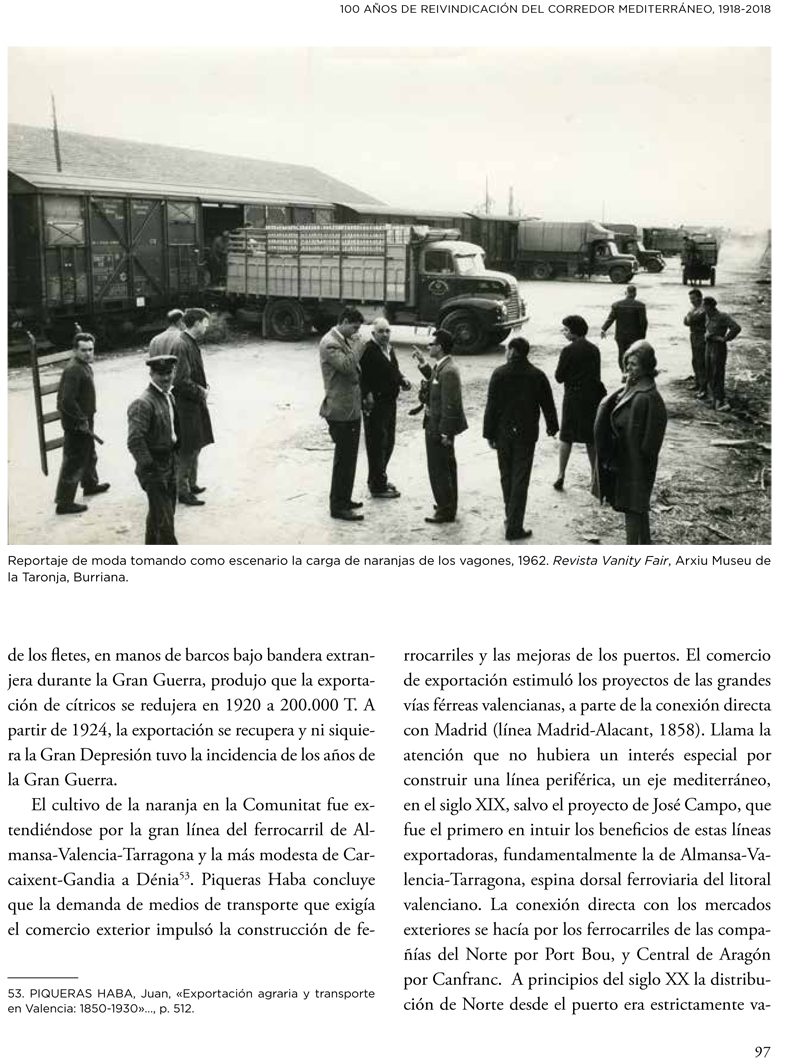The Mediterranean Corridor: Millenary Reality, Century Demand. València, 1918
- Authors: ARCINIEGA GARCÍA, Luis (dir.)
- Place, Editorial, Year: València, Ministry of Housing, Public Works and Territory Planning , 2018.
- Publication types: Llibre
-
Abstract:
This publication brings together a whole process that links the diffuse commemoration of the second millennium of the Via Augusta with the centenary of Ignacio Villalonga's claim for a railway axis that would run along the Mediterranean peninsular coast and communicate with trans-Pyrenean Europe. This publication brings together a whole process that links the diffuse commemoration of the second millennium of the Via Augusta with the centenary of Ignacio Villalonga's claim for a railway axis that would run along the Mediterranean peninsular coast and communicate with trans-Pyrenean Europe. Since ancient times, the Mediterranean axis has been of great importance for the communication of people and ideas and the distribution of goods. In medieval and modern times it gave way to a fragmented road network, and from the second half of the 18th century to a radial peninsular layout. These characteristics were transferred in the following century to the railway network, which, due to the diversity of companies, became extremely fragmented. In the Valencian sphere, in the first decades of the 20th century, there was a constant request for improvements in infrastructures and communications with a view to the development of the economy. Between the Regional Exhibition of Valencia in 1909 and the First World War, there were requests for improvements to the port, a direct train linking it with Madrid via Utiel and a Mediterranean rail corridor. In the latter case, the proposal made by Ignacio Villalonga in 1918 stands out. Social, economic and political realities prevented or delayed most of the proposals. The incorporation of Spain into the European Union in 1986 allowed this circumstance to be reconsidered. The Mediterranean Corridor, in a new supranational articulation, can be seen in the network of multimodal corridors of the European Union.
- ‘The Via Augusta: a millenary network’. Desirée Juliana Colomer
- ‘The arc of culture in the medieval twilight’. Óscar Calvé Mascarell
- "Paths, roads and motorways. The Mediterranean as a transversal itinerary". Manuel Carreres Rodríguez
- ‘Conformation of the railway axis on the Mediterranean coast’. Laura Bolinches Martínez
- ‘100 years of claims for the Mediterranean Corridor, 1918-2018’. Susana Climent Viguer
- ‘The Palace of Arts and Industries: Apollo and Mercury in Valencia’. Luis Arciniega García
- "The Mediterranean Corridor. A trans-European infrastructure". Rubén Pacheco Díaz
Chapters
Details
ISBN: 978-84-482-6285-3








